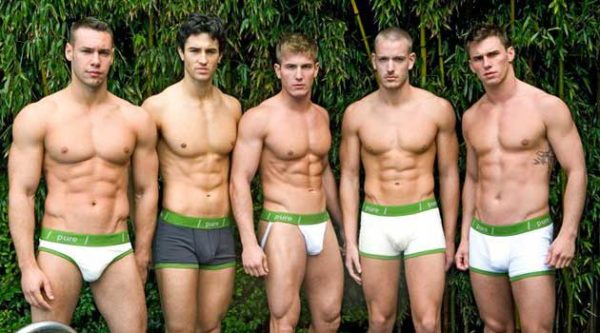What’s Under A Name: Branding Identity in Underwear
No one wants to talk about underwear. It’s a secret subject, an unseemly that everyone needs, but no one likes to acknowledge. For a company that sells underthings, trying to retain brand recognition with a topic that uncomfortable can be a challenge. However, there are successful lines that cater to all price ranges, sizes, genders, and preferences. What’s the secret? Well, there really isn’t one, but there are some common choices made to differentiate a brand from one pair of undies to the next that separate the brands into their own entities.
Fabrics
Clothing is a tactile product, and the touch and feel of it is the first standard when searching for a new article. With clothing that rests so close to your most sensitive areas, the make of it matters more than a cheap t-shirt or socks. The Underwear Expert lists over 20 types of fabrics used just in men’s underwear, including six kinds of cotton and three trademarked blends. There are printed patterns, textures, invisible seams, snug nylon meant to fit like a second skin while working out and baggy cottons for a lazy weekend at home. The materials of a pair of underwear matter, but if they aren’t made right then even the most expensive fabric will be unwearable.
Styles
It’s hard to have a recognizable look when the product is only seen in the comfort of people’s homes. Still, there are different underwear cuts out there, both for men, women, and anyone in between, that are designed for comfort, discretion, and support – and in some cases, intimate appeal. More sports-focused brands will have tighter fits to keep control while exercising; clothing lines that also design thousand-dollar suits and evening apparel will plan for the businessman who needs support and the socialite who needs to work around an open-backed gown. As Everyday Health points out, style choices are largely up to individual preference, but that preference is molded by your activities, your environment, and your occupation. An underwear line shows what its intended audience is by the styles it chooses to emphasize in its advertising – and by the models that show them off.

Packaging
Presentation of a product is more than just the container it’s sold in. The setting wherein you purchase the item also affects what you expect from it when you bring it home. At dedicated intimate apparel boutiques, the product you get is the service and a tailored fit that will be your go-to item for any occasion. On the other end, bags of bulk underwear are not for personalization in store, but to fill a simple need. In the middle are the chain distributers, the high-end New York boutiques like VK Nagrani men’s designer underwear, and the online retailers who sell fancy fabrics and novelty designs. These brands are more defined, since they don’t cater to a local market, but also have more substance than a grab bag of a dozen pairs of briefs. Anyone who’s bought something from Victoria’s Secret knows what a devil it is to hide that striped pink bag as you walk through the mall. For the online retailers that don’t have the physical packaging to imprint their brand on others, they have their websites, their advertisements, and their marketing materials.
Marketing
Underwear models are the go-to poster children for perfection in a picture. Intimate apparel advertisements showcase inhuman physiques in stark colors, promising the glory of your own sexual appeal rising if you wear the same underwear. However, there has been a shift away from the sculptures of the last few decades, pushing more average, more reasonable men into boxer-briefs for photoshoots. The New York Times notes that men’s underwear is focusing more on the everyman, so that the customers have a more realistic goal on the insert to their 8-pack of boxers than a “blond, hairless and perfect” model. There are slews of funny underwear ads out there, ones that make jokes with the models or the mascots of the company. Startup companies that cater to body types away from the mainstream are also casting models that fit their audiences, crossing color, gender, age, and size borders to reach out to previously neglected markets.
Conclusion
Despite how talking about underwear in an average setting is a taboo topic, most people have a brand they are loyal to for some reason. Whether it’s the feel of the underwear, the cute styles that match your personality, the services the company provides with it, or the funny ad you saw on TV, there was some act that pulled your attention towards the service. All products have brands, but underwear clothing lines have to take in special considerations for theirs, since it is such a private but important part of your life.


